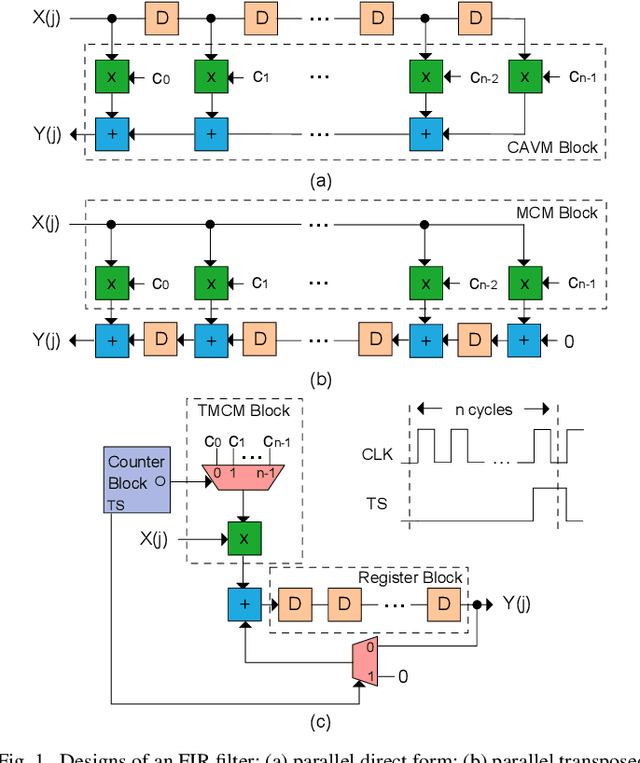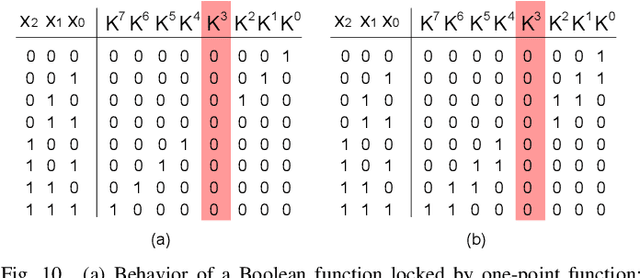Felipe Almeida
Hybrid Protection of Digital FIR Filters
Jan 26, 2023



Abstract:A digital Finite Impulse Response (FIR) filter is a ubiquitous block in digital signal processing applications and its behavior is determined by its coefficients. To protect filter coefficients from an adversary, efficient obfuscation techniques have been proposed, either by hiding them behind decoys or replacing them by key bits. In this article, we initially introduce a query attack that can discover the secret key of such obfuscated FIR filters, which could not be broken by existing prominent attacks. Then, we propose a first of its kind hybrid technique, including both hardware obfuscation and logic locking using a point function for the protection of parallel direct and transposed forms of digital FIR filters. Experimental results show that the hybrid protection technique can lead to FIR filters with higher security while maintaining the hardware complexity competitive or superior to those locked by prominent logic locking methods. It is also shown that the protected multiplier blocks and FIR filters are resilient to existing attacks. The results on different forms and realizations of FIR filters show that the parallel direct form FIR filter has a promising potential for a secure design.
Word Embeddings: A Survey
Jan 25, 2019


Abstract:This work lists and describes the main recent strategies for building fixed-length, dense and distributed representations for words, based on the distributional hypothesis. These representations are now commonly called word embeddings and, in addition to encoding surprisingly good syntactic and semantic information, have been proven useful as extra features in many downstream NLP tasks.
 Add to Chrome
Add to Chrome Add to Firefox
Add to Firefox Add to Edge
Add to Edge